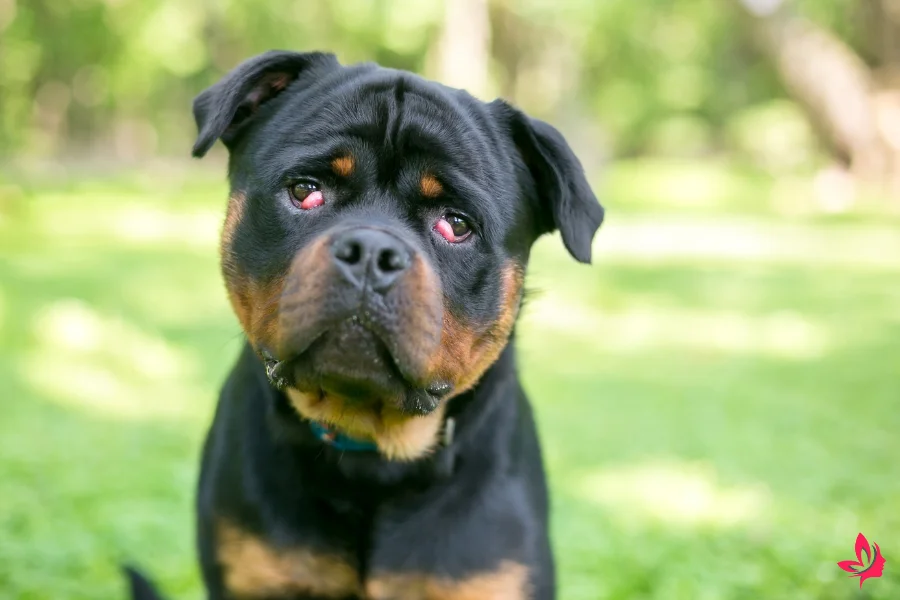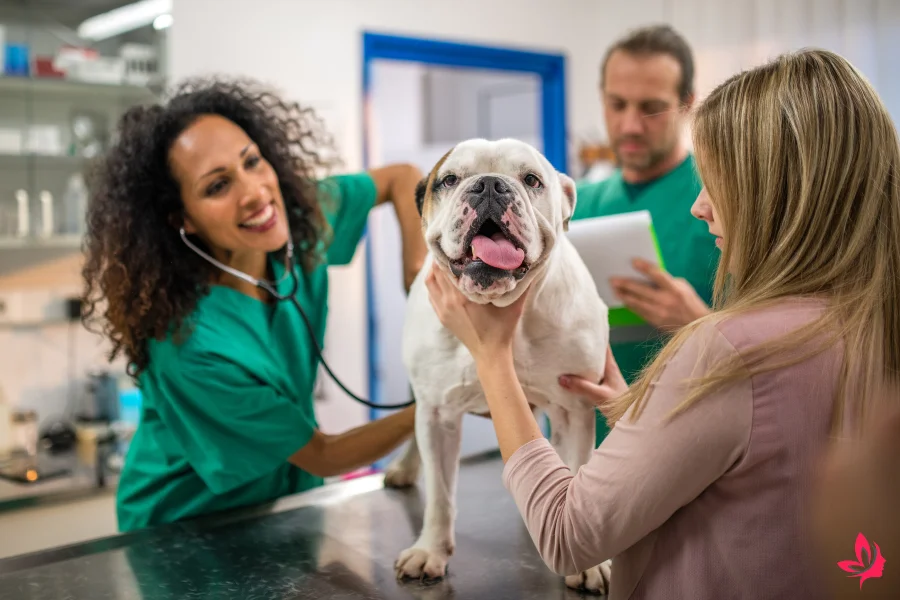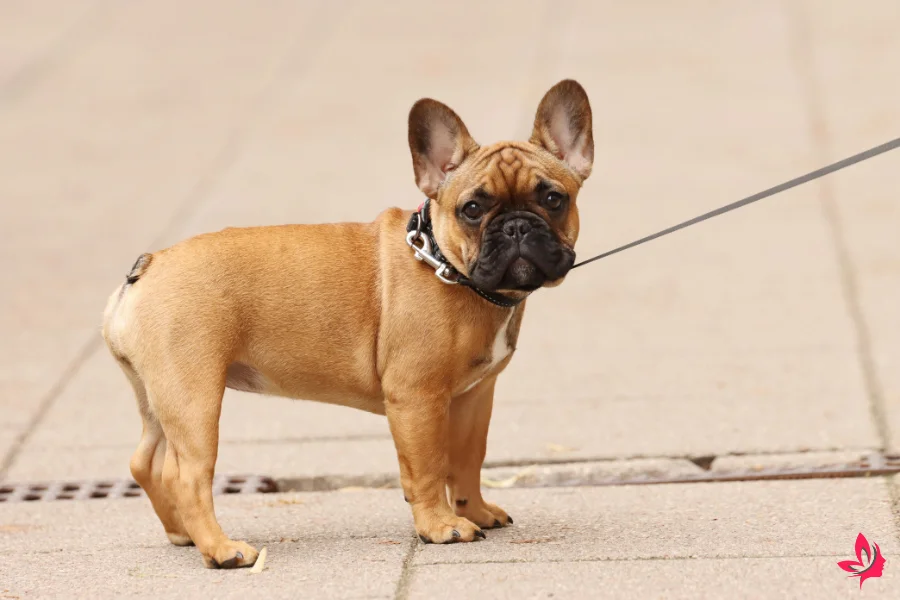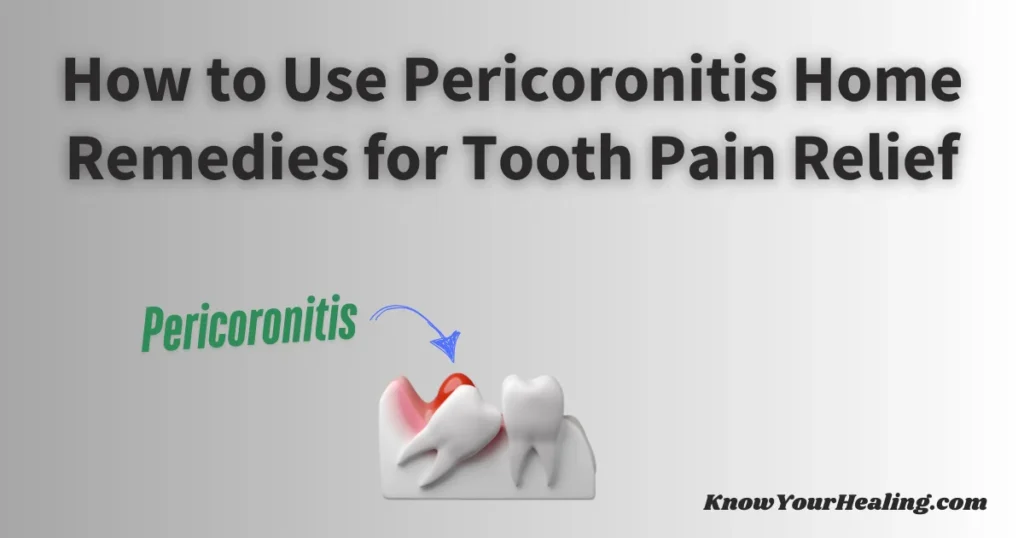Cherry eye home remedies can relieve dogs suffering from this common condition. Cherry eye occurs when a dog’s third eyelid gland becomes swollen and visible.
Treatment options include gently soothing the affected area with moist cloths or artificial dog tears, which can help reduce discomfort and irritation.
While veterinarians typically recommend surgical intervention for complete correction, some owners find temporary solutions with home remedies. Proper understanding and gentle care can make a significant difference for the dog.
The dog’s condition must be monitored closely to ensure the best care possible, and if symptoms persist, a veterinarian must be consulted.
This blog post offers valuable insights into non-surgical options for managing cherry eye in dogs, ensuring pet owners have the right tools and knowledge.
You will learn about effective techniques for addressing this condition at home and the importance of professional veterinary advice when needed. With this information, dog owners can confidently support their pets in feeling comfortable and healthy.
Understanding Cherry Eye in Dogs

Cherry eye, or prolapse of the third eyelid gland, is a condition where the gland in a dog’s eye slips from its normal position. It causes a red swelling in the inner corner of the dog’s eye.
Certain breeds, like cocker spaniels and basset hounds, are more susceptible.
What is Cherry Eye?
Cherry eye is medically known as a prolapsed gland of the third eyelid. It appears as a pink or reddish mass in the corner of the dog’s eye.
The gland’s proper position is crucial for eye health as it helps produce tears. When the connective tissue holding this gland weakens, the gland moves to the wrong place, leading to this condition.
Symptoms and Diagnosis of Cherry Eye
Symptoms of cherry eye include a noticeable pink mass in the corner of the eye, irritated or dry eye, and changes in tear production. In severe cases, it might result in corneal ulcers or eye infections.
To diagnose the condition, veterinarians may perform a Schirmer tear test to assess tear production and check for other eye diseases.
Recognizing Symptoms in Your Dog
Dog owners might notice a minor cherry-like swelling in the inner corner of the eye. If untreated, it may lead to itchy eyes or vision problems.
This condition is more common in young dogs, especially in breeds such as English bulldogs, French bulldogs, and Boston terriers. Identifying symptoms early is vital to prevent complications.
Diagnosing Cherry Eye
Diagnosing cherry eye involves a visual examination of the affected eye by a veterinary ophthalmologist. Additional tests, like checking for keratoconjunctivitis sicca (dry eye), help determine if there are any secondary eye issues.
If home remedies fail, seeking veterinary advice to explore surgical options is a good idea. Surgical techniques usually ensure a high success rate for repositioning the gland.
Home Remedies for Treating Cherry Eye

Cherry eye in dogs often appears as a red swelling at the corner of a dog’s eye due to the prolapse of the third eyelid gland.
Dog owners can try some at-home treatments to provide relief, especially in mild cases, but it’s essential to consult a vet for more severe conditions.
Natural Treatments for Cherry Eye
For natural treatment options, dog owners can begin by applying moist, warm compresses to the affected eye. This can soothe the area and help the gland return to normal.
Gentle massages around the eye may aid in repositioning the prolapsed gland.
Additionally, using artificial tears can keep the dog’s eyes from becoming dry.
To prevent dry eye, which could worsen the condition, it’s a good idea to look for teardrops that offer lubrication.
Remember that these methods won’t replace the need for professional intervention if the cherry eye persists or worsens.
Preventative Measures and Long-Term Care
Long-term care involves watching for early signs of cherry eye in young dogs, especially those from breeds commonly affected, such as Boston Terriers and Great Danes.
Preventing exposure to irritants and maintaining overall eye health can lessen the chance of prolapsed glands.
Use joint supplements that may support connective tissue health, reducing potential issues with the third eyelid gland.
Regular pet exams are vital to catch early cherry eye symptoms and monitor the eyelids’ condition.
In some cases, surgical options like the surgical replacement of the third eyelid gland might be necessary if home remedies do not work.
A veterinary ophthalmologist can provide a thorough eye health assessment for a long-term solution.
Surgical and Medical Interventions

Treating cherry eye in dogs often involves surgical techniques and alternative medical treatments. These methods aim to reposition the prolapsed gland and maintain the dog’s eye health to prevent issues like dry eye or more serious complications.
When to Consider Surgery
Cherry eye surgery is often recommended in severe cases. This procedure involves returning the prolapsed gland of the third eyelid to its normal position.
A veterinary ophthalmologist might perform this to ensure a high success rate.
Surgery is a good idea for the most commonly affected dog breeds, such as cocker spaniels, basset hounds, and bulldogs, where genetic predisposition plays a role.
In an operation using general anesthesia, the surgeon avoids removing the gland to prevent future complications like keratoconjunctivitis sicca, or dry eye.
For dog owners considering surgical options, consulting with a vet to discuss potential complications and the dog’s health status is crucial.
The proper surgical technique can position the gland correctly, providing a permanent solution to the condition.
Alternative Medical Treatments
Alternative methods can help manage cherry eye symptoms for those not ready for surgical intervention.
Anti-inflammatory eye drops might be used to reduce swelling in the affected eye. These drops aim to keep the eye moist and minimize discomfort, aiding in repositioning the gland to its proper position.
Additionally, gentle massages near the corner of the dog’s eye might help reduce the prolapse of the third eyelid gland.
While these home remedies may provide short-term relief, they are not a permanent solution.
Medical treatment must be carefully considered in breeds like Boston terriers and basset hounds to prevent the worsening of conditions like corneal ulcers or reduced tear production.
Managing Cherry Eye in Specific Dog Breeds

Managing cherry eye in dogs can vary depending on the breed due to differences in eye structure and genetic predisposition.
Certain breeds, such as cocker spaniels and bulldogs, are more susceptible to conditions involving the gland of the third eyelid. This section explores how specific factors in these breeds impact management strategies and home remedies.
Breed-Specific Considerations
Some breeds, such as cocker spaniels, English bulldogs, and Boston terriers, are more prone to cherry eye due to their unique eye anatomy. The condition involves the prolapse of the third eyelid gland, which appears as a pink mass near the corner of the eye.
In young dogs of these breeds, the connective tissue supporting the gland is often weaker, making prolapse more likely.
The swollen gland can cause discomfort and may lead to further eye problems if not addressed.
Breeds like the Lhasa apso and Shih Tzu often require special attention to avoid dry eye, known as keratoconjunctivitis sicca. This is due to reduced tear production that can result from prolonged exposure of the third eyelid.
Regular check-ups and early recognition of symptoms are crucial for maintaining eye health in these breeds.
Tailored Home Remedies for Different Breeds
For dogs prone to cherry eye, gentle massages on the lower eyelid can sometimes temporarily help reposition the gland.
Owners of breeds commonly affected by cherry eye can use a warm tea bag compress to soothe the affected eye. It helps reduce the discomfort caused by the red swelling and supports healing.
Artificial tears may also be recommended to prevent dry eyes and keep the gland hydrated.
Staying attentive to eye changes is a good idea for breeds like bulldogs and spaniels.
Regular pet exams can help manage the condition effectively without immediate surgical interventions.
Always consult a veterinary ophthalmologist to determine if home remedies suit your dog’s situation.
Final Thoughts
Cherry eye home remedies may relieve your dog’s eye discomfort, though it’s important to consult a veterinarian before starting any treatment.
Home remedies might include applying a warm compress to the affected eye, which can help reduce swelling.
Cherry eye home remedies often focus on soothing inflammation and supporting overall eye health. Some dog owners try saline solutions to rinse the eye gently.
Remember, these methods might only provide temporary relief.
While these remedies can be helpful, professional care remains crucial. Untreated cherry eye can lead to further complications, so monitor your pet’s condition and seek veterinary advice promptly.
Key Takeaways:
- Warm Compress: Helps reduce eye swelling.
- Saline Solution: Can clean and soothe the eye.
- Veterinary Consultation: Always recommended to ensure proper care.
- Monitor Symptoms: Look for any changes or worsening.
Cherry eye remedies are valuable tools but are not a substitute for professional medical treatment when necessary.
Frequently Asked Questions
Home remedies for cherry eye can sometimes provide temporary relief until veterinary care is available. These methods may include gentle massage and warm compresses.
How can I fix my dog’s cherry eye at home?
Treating cherry eye at home should only be a temporary solution. A warm compress may reduce swelling, and gentle massage around the affected eye can sometimes help reposition the gland.
Consulting with a veterinarian for a proper diagnosis and treatment plan is important.
How do you pop a cherry eye back in?
Repositioning a prolapsed tear gland involves gently massaging the area. Using a sterile lubricant can make the process smoother.
One should always be cautious to avoid any pain or discomfort for the dog. It is highly recommended that veterinary advice be sought to ensure safe handling.
Can you push the cherry eye back?
Pushing the gland back in should only be done gently. Massage with care and use a lubricant to avoid irritation.
Veterinary guidance is essential to prevent further complications or damage to the dog’s eye.
What triggers the cherry eye?
Cherry eye can be triggered by weak connective tissue holding the gland in place, genetic factors, or trauma to the area. Certain breeds are more prone to this due to their genetic makeup.
Is cherry eye painful for dogs?
Cherry eye can cause discomfort and irritation for dogs. It may lead to symptoms like redness, swelling, and excessive tearing. If left untreated, it can result in more severe eye issues.
How to treat a dog eye infection without a vet?
For mild infections, cleaning around the eye with a saline solution and applying a warm compress may help.
However, these methods do not replace professional veterinary care; a vet should evaluate infections.
Will a warm compress help the cherry eye in dogs?
A warm compress can help soothe swelling and discomfort associated with cherry eye in dogs. It encourages blood flow and temporarily relieves symptoms until professional care is available.
How to massage a dog’s tear duct?
To massage a dog’s tear duct, use clean hands and gently apply pressure in a circular motion around the eye.
This can help move the gland back into place temporarily but should be done carefully to prevent harm.
Can I walk my dog with cherry eye?
Dogs with cherry eyes can still enjoy walks. However, it is important to avoid environments where dust and debris can irritate the eye. You should also keep your eyes clean during these activities.
How much does it cost to fix a dog’s cherry eye?
The cost of surgery to correct the cherry eye can range from $300 to $800, depending on location and the veterinarian’s expertise.
This cost generally includes surgery and post-operative care.




